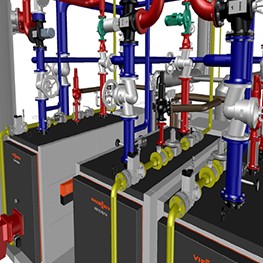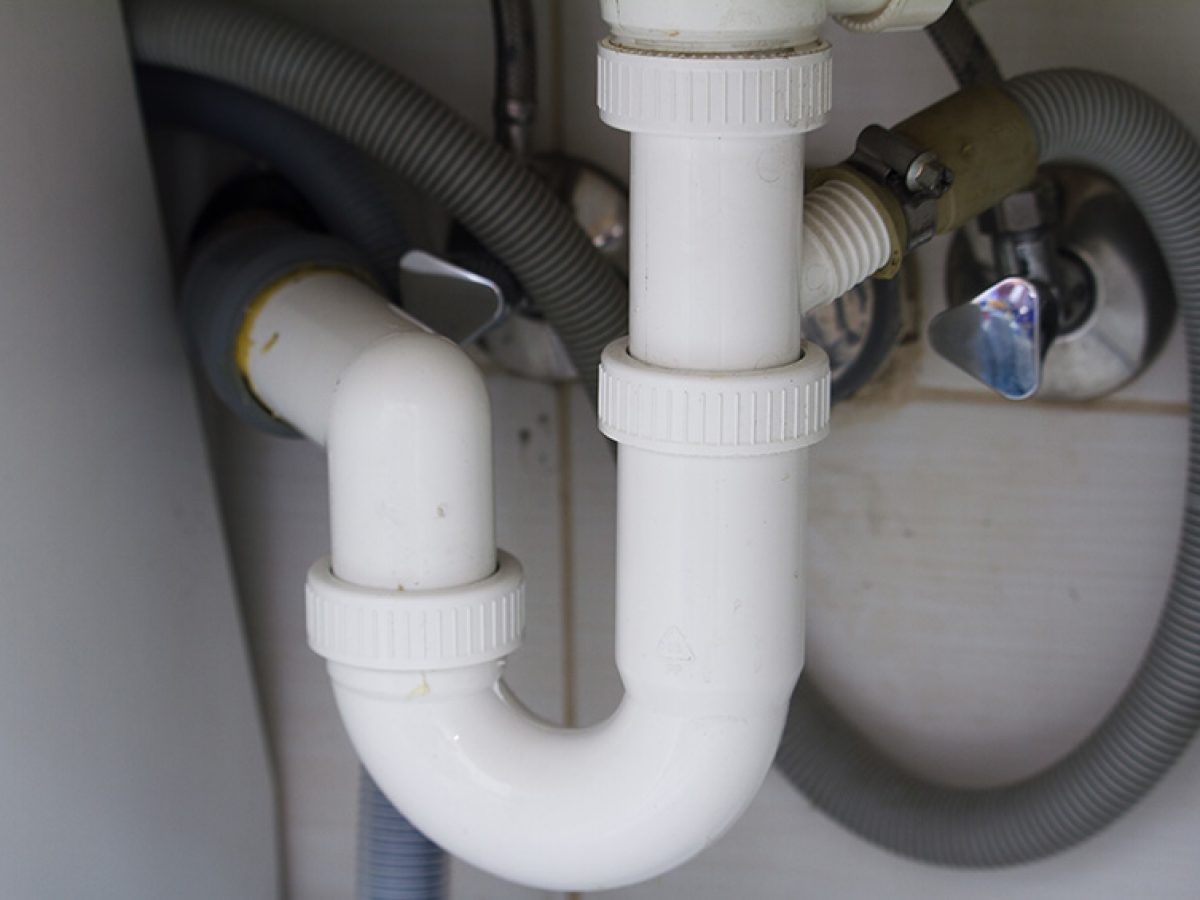Presented here further down you can locate a bunch of quality news around Anatomy of a House: Understanding the Components.

Recognizing exactly how your home's pipes system works is essential for every single property owner. From supplying clean water for drinking, cooking, and bathing to safely getting rid of wastewater, a well-kept pipes system is important for your family's health and comfort. In this thorough guide, we'll explore the complex network that composes your home's plumbing and offer ideas on maintenance, upgrades, and managing typical issues.
Introduction
Your home's pipes system is greater than simply a network of pipelines; it's an intricate system that ensures you have access to clean water and efficient wastewater removal. Understanding its parts and just how they work together can aid you protect against expensive fixings and make certain everything runs efficiently.
Standard Components of a Pipes System
Pipelines and Tubing
At the heart of your pipes system are the pipes and tubes that carry water throughout your home. These can be made of various materials such as copper, PVC, or PEX, each with its benefits in regards to longevity and cost-effectiveness.
Components: Sinks, Toilets, Showers, etc.
Components like sinks, commodes, showers, and tubs are where water is used in your house. Comprehending how these fixtures attach to the pipes system helps in diagnosing problems and intending upgrades.
Shutoffs and Shut-off Factors
Shutoffs manage the circulation of water in your pipes system. Shut-off shutoffs are critical throughout emergency situations or when you require to make repair services, permitting you to separate parts of the system without disrupting water flow to the entire home.
Water System System
Key Water Line
The main water line attaches your home to the municipal water supply or a private well. It's where water enters your home and is distributed to various fixtures.
Water Meter and Stress Regulatory Authority
The water meter actions your water usage, while a stress regulatory authority guarantees that water moves at a safe pressure throughout your home's pipes system, protecting against damage to pipelines and components.
Cold Water vs. Hot Water Lines
Comprehending the distinction in between cold water lines, which provide water straight from the major, and hot water lines, which bring warmed water from the hot water heater, aids in troubleshooting and preparing for upgrades.
Drain System
Drain Pipes Pipeline and Traps
Drain pipelines lug wastewater away from sinks, showers, and toilets to the sewage system or septic tank. Traps protect against sewer gases from entering your home and likewise catch particles that could create clogs.
Ventilation Pipelines
Ventilation pipelines permit air into the water drainage system, preventing suction that could slow down water drainage and cause traps to vacant. Correct ventilation is vital for keeping the integrity of your pipes system.
Importance of Appropriate Water Drainage
Ensuring proper drain stops backups and water damages. Routinely cleaning up drains pipes and maintaining catches can prevent pricey repair work and extend the life of your pipes system.
Water Heating System
Kinds Of Hot Water Heater
Water heaters can be tankless or standard tank-style. Tankless heating systems heat water as needed, while containers save heated water for prompt use.
Exactly How Water Heaters Link to the Pipes System
Comprehending just how water heaters link to both the cold water supply and warm water distribution lines assists in detecting issues like inadequate warm water or leaks.
Upkeep Tips for Water Heaters
Frequently flushing your hot water heater to eliminate sediment, examining the temperature setups, and examining for leaks can expand its lifespan and improve power efficiency.
Typical Pipes Problems
Leaks and Their Reasons
Leakages can occur as a result of aging pipes, loose fittings, or high water stress. Resolving leakages immediately protects against water damage and mold development.
Clogs and Blockages
Obstructions in drains and toilets are typically triggered by purging non-flushable things or a buildup of grease and hair. Using drainpipe screens and being mindful of what goes down your drains can avoid blockages.
Signs of Plumbing Issues to Look For
Low tide stress, slow-moving drains pipes, foul odors, or abnormally high water costs are indicators of possible pipes troubles that should be addressed without delay.
Pipes Upkeep Tips
Routine Evaluations and Checks
Arrange annual pipes examinations to capture concerns early. Seek indications of leaks, rust, or mineral build-up in taps and showerheads.
Do It Yourself Upkeep Tasks
Basic jobs like cleaning tap aerators, looking for toilet leakages utilizing dye tablet computers, or shielding subjected pipelines in chilly climates can stop significant plumbing concerns.
When to Call an Expert Plumbing Technician
Know when a pipes issue calls for expert knowledge. Trying complex fixings without proper expertise can result in even more damage and greater repair expenses.
Updating Your Plumbing System
Factors for Updating
Upgrading to water-efficient fixtures or changing old pipes can boost water quality, lower water expenses, and raise the value of your home.
Modern Pipes Technologies and Their Advantages
Explore innovations like smart leak detectors, water-saving commodes, and energy-efficient hot water heater that can conserve money and decrease ecological influence.
Price Factors To Consider and ROI
Calculate the in advance expenses versus lasting cost savings when considering plumbing upgrades. Several upgrades spend for themselves through minimized energy costs and fewer repair services.
Environmental Effect and Conservation
Water-Saving Components and Appliances
Setting up low-flow taps, showerheads, and toilets can substantially lower water usage without compromising performance.
Tips for Decreasing Water Use
Simple practices like repairing leakages promptly, taking shorter showers, and running full tons of washing and recipes can conserve water and lower your utility expenses.
Eco-Friendly Pipes Options
Take into consideration lasting pipes materials like bamboo for flooring, which is durable and environment-friendly, or recycled glass for kitchen counters.
Emergency situation Readiness
Steps to Take Throughout a Plumbing Emergency
Know where your shut-off valves are located and just how to turn off the water in case of a ruptured pipeline or significant leak.
Significance of Having Emergency Contacts Handy
Maintain call information for local plumbers or emergency situation solutions easily available for quick action during a pipes situation.
Do It Yourself Emergency Fixes (When Applicable).
Temporary fixes like using duct tape to spot a dripping pipeline or positioning a pail under a trickling tap can lessen damage till a specialist plumbing technician gets here.
Verdict.
Recognizing the makeup of your home's pipes system equips you to preserve it successfully, saving time and money on repairs. By following normal upkeep routines and remaining informed about modern-day pipes innovations, you can ensure your plumbing system operates successfully for several years to find.
HOW YOUR PLUMBING SYSTEM WORKS
Which Pipes Do What?
Blue lines = fresh water supply entering the building
Red lines = hot water supply entering the building
Grey lines = pipes carrying waste away from the building and venting pipes carrying gases away from the building (through the roof)
YOUR MAIN PLUMBING SYSTEMS
There are two main plumbing systems that support your home s basic plumbing needs one that brings clean water into your home, and one that sends dirty water away from your home. Connected to the toilet, bath, shower, and other faucets in your home, these two systems keep your water flowing in the right directions.
ACCESSING FRESH WATER
Fresh and clean water is brought into your home through the main water supply line . Filtered through one pipe, this water is pressured to flow into the various fixtures in your home at any given time.
This water can be sourced from a well located on your property, a pond or river (mostly cottages), or, as in most cases, from the city s municipal water treatment centre. However, it is important to note that water that is untreated, such as the water siphoned from ponds or rivers, may not be safe to drink. Personal water supplies always need to be treated for hardness and contaminants before consumed.
MUNICIPAL WATER SUPPLIES
Improve taste and odour
Remove sediment
Eliminate hardness
Reduce chlorine
COLD WATER SUPPLY VS. HOT WATER SUPPLY
Cold water flows into your home or building through the service line, which then distributes hot or cold water to your fixtures. This line is most commonly run through a central column that runs floor to floor. Hot water runs in short and straight pipes as the longer the pipeline, the more heat that will be lost in the transfer. Having shorter pipes also allows residents to access hot water more quickly.
WASTE WATER SYSTEM
Your wastewater system is divided into two parts pipes that send wastewater away from your home and venting pipes that send sewer gas away from your home. Sewage water travels through pipes that flush the water and waste towards local sewers that are operated and managed by your city or town. Most sewer systems rely on gravity to move the wastewater to where it needs to go.
The further away from your toilet or sink, the larger wastewater pipes become. This allows for waste to be disposed of from various parts of your home or business at once without pipe blockages. The angle and flow of these pipes are also essential for keeping your waste pipes clear of build up.
https://harrisplumbing.ca/how-your-home-plumbing-system-works/

HOW YOUR PLUMBING SYSTEM WORKS
Which Pipes Do What?
YOUR MAIN PLUMBING SYSTEMS
There are two main plumbing systems that support your home s basic plumbing needs one that brings clean water into your home, and one that sends dirty water away from your home. Connected to the toilet, bath, shower, and other faucets in your home, these two systems keep your water flowing in the right directions.
ACCESSING FRESH WATER
Fresh and clean water is brought into your home through the main water supply line . Filtered through one pipe, this water is pressured to flow into the various fixtures in your home at any given time.
This water can be sourced from a well located on your property, a pond or river (mostly cottages), or, as in most cases, from the city s municipal water treatment centre. However, it is important to note that water that is untreated, such as the water siphoned from ponds or rivers, may not be safe to drink. Personal water supplies always need to be treated for hardness and contaminants before consumed.
MUNICIPAL WATER SUPPLIES
COLD WATER SUPPLY VS. HOT WATER SUPPLY
Cold water flows into your home or building through the service line, which then distributes hot or cold water to your fixtures. This line is most commonly run through a central column that runs floor to floor. Hot water runs in short and straight pipes as the longer the pipeline, the more heat that will be lost in the transfer. Having shorter pipes also allows residents to access hot water more quickly.
WASTE WATER SYSTEM
Your wastewater system is divided into two parts pipes that send wastewater away from your home and venting pipes that send sewer gas away from your home. Sewage water travels through pipes that flush the water and waste towards local sewers that are operated and managed by your city or town. Most sewer systems rely on gravity to move the wastewater to where it needs to go.
The further away from your toilet or sink, the larger wastewater pipes become. This allows for waste to be disposed of from various parts of your home or business at once without pipe blockages. The angle and flow of these pipes are also essential for keeping your waste pipes clear of build up.
https://harrisplumbing.ca/how-your-home-plumbing-system-works/
I am very interested by Understanding Your Home's Plumbing Anatomy and I am assuming you enjoyed reading the entire piece. Sharing is caring. One never knows, you may be helping someone out. Kudos for being here. Come back soon.
Source This Article